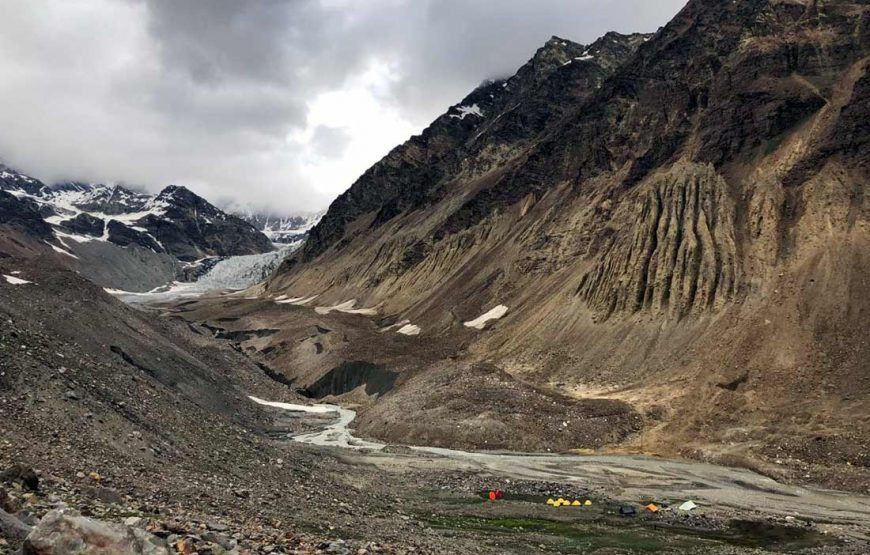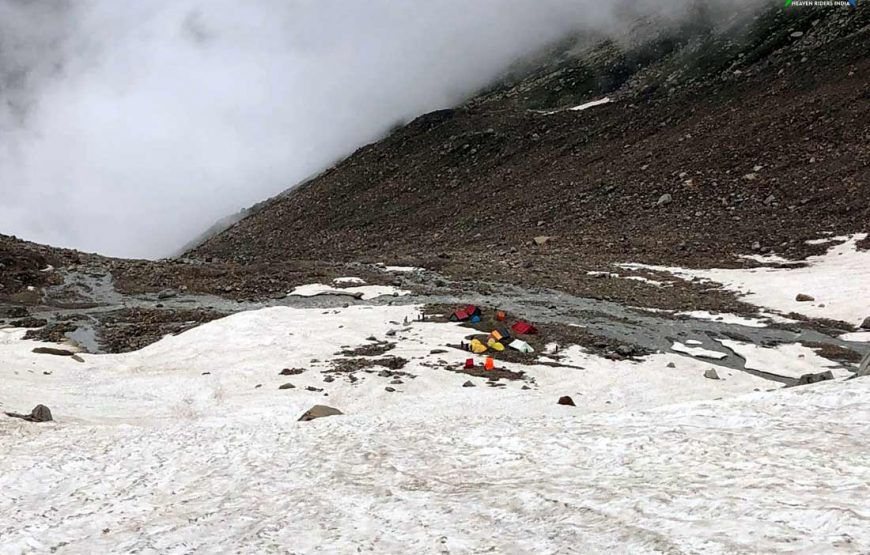Pin Parvati Pass Trek – From Hidden Valleys to Snowy Desert Hills
- heavenridersin0
- Aug 13
- 4 min read
If you are an explorer seeking a challenging but scenic trek, Pin Parvati Pass Trek is your best option. The altitude trek connects two worlds of contrasts—the lush, flower-strewn valleys of Kullu and the rugged, scenic cold desert of Spiti. The trek is 110 kilometers long and rises by an elevation of 17,450 feet, making it one of the toughest trekking trails in India.
In this article, we shall elaborate on why the Pin Parvati Pass Trek is so unique, starting with what you have around you to the prerequisites before one heads on the trek.

1. The Magic of Contrasting Worlds
By far, the most unique feature of the Pin Parvati Pass Trek must be the manner in which the landscape evolves. The trek starts in the fertile Parvati Valley of Himachal Pradesh, with melancholy pine forests, green meadows, and glacial rivers to drink from all around you. On ascending further, the landscape slowly transforms—trees become fewer in number, flowers start disappearing, and rocks dominate the landscape.
Once you reach the pass, you are in the Spiti Valley, a cold desert of rugged mountains, ancient monasteries, and a whole new life. All within days, as if on another planet.
2. The Route and Main Highlights
The standard Pin Parvati Pass Trek tour starts from Barshaini near Kasol in the Kullu district and ends at Mud village in the Spiti district. Below is a small idea of what one gets to see along the route:
Barshaini to Kheerganga—a tough start with stunning hot springs where one usually takes a bath.
Kheerganga to Tunda Bhuj—Meadows and waterfalls are the sight.
Tunda Bhuj to Thakur Kuan—Rocky bridges and natural boulders offer an exhilarating experience.
Thakur Kuan to Odi Thach—White-capped peaks in the distance and grassy meadows.
Odi Thach to Mantalai Lake—It is said that the Parvati River flows out from this sacred lake.
Mantalai Lake to Base Camp—Glacial treks and bouldery paths lead to the challenging ascent.
Pin Parvati Pass ascent—Grand finale day with snow meadows, ice, and breathtaking panorama.
Down to Mud Village—Bringing the acclimatization process down a notch towards the colorful but rugged beauty of the Spiti landscape.

3. The Challenge Factor
Don't mix it up with—Pin Parvati Pass Trek isn't a beginner's trek. It is one of Himachal Pradesh's more challenging treks due to its duration, height, and inconsistent weather. Snowfields to plod through, river crossings, steep ascents, and days of walking on end require a robust physique.
Trekkers are usually subjected to sudden climatic shifts—sun in the morning, snow in the afternoon, and wind blasts in the evening. Thin, high-altitude air also causes breathing difficulties for inexperienced trekkers. It is this that renders professional training, psychological acclimatization, and a seasoned guide of paramount importance.
4. Best Time to Go
The best season for the Pin Parvati Pass Trek is July to September. The snow would have already melted down to the level of forming the pass and very stable weather conditions by then. Early July may have the chance of observing patches of snow on the Kullu side, and late September may have crystal clear skies in Spiti.
But even then, preparation for sub-zero nights and some rain or snow during these months is advisable.
5. Trek Preparation
Pin Parvati Pass Trek demands sincere preparation. Some of the most important tips are explained below:
Physical Conditioning – Begin jogging, cycling, and stair climbing at least 2–3 months ahead of the trek in order to build stamina.
Acclimatization—Spend a day or two in Kasol or Manikaran before proceeding further for the trek so that your body becomes acclimatized to the altitudes.
Gear—Good walking shoes, woolens, rainwear, and trekking sticks are required.
Guards and Permits—It's a good idea to travel with a good trekking team or with the guide. Permits must be taken to venture deep inside Spiti.
6. Lifelong Experiences Along the Way
Every day of the Pin Parvati Pass Trek is another new and never-to-be-forgotten one:
Hot Springs of Kheerganga – Soak in hot water beneath pine trees.
Camping at Mantalai Lake—a night under a million stars at 13,500 ft is magic.
Wildlife Encounter—Blue sheep, marmots, and if extremely lucky, even a snow leopard in Spiti.
Cultural Encounter – The villagers of Spiti are welcoming. Mud brick homes and ancient monasteries remind one of the past.

7. What Makes This Trek Special
India boasts numerous treks at high altitudes, but the Pin Parvati Pass Trek stands apart, as it provides unadulterated adventure with a pinch of spirituality and culture. You trek through grassland and forest one day and a cold desert with Buddhist mantras along the side of the mountains the next.
It's not a walk—traversing two worlds, and both as lovely as the other.
FAQs on Pin Parvati Pass Trek
Q1: How many days is the Pin Parvati Pass Trek?
The trek is approximately 110 km and typically takes 9-11 days to complete, depending upon the weather and walking pace of the group.
Q2: Is the trek permit-based?
Yes. You will need forest department permits and clearance to travel to Spiti Valley.
Q3: Where is the summit of the trek?
The Pin Parvati Pass itself is at an altitude of 17,450 feet above sea level.
Q4: During what season is it good to undertake the trek?
Good between July and September, after the snow has melted enough to cross safely.




Comments